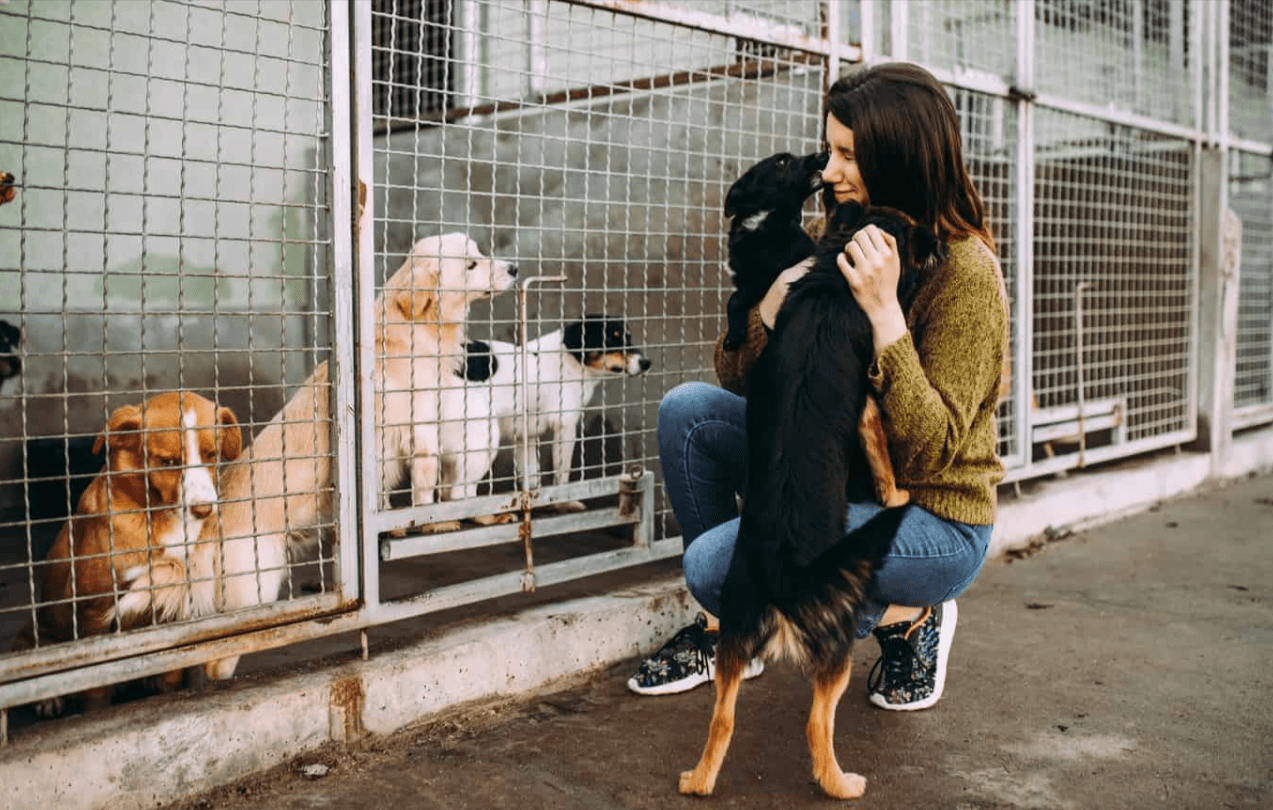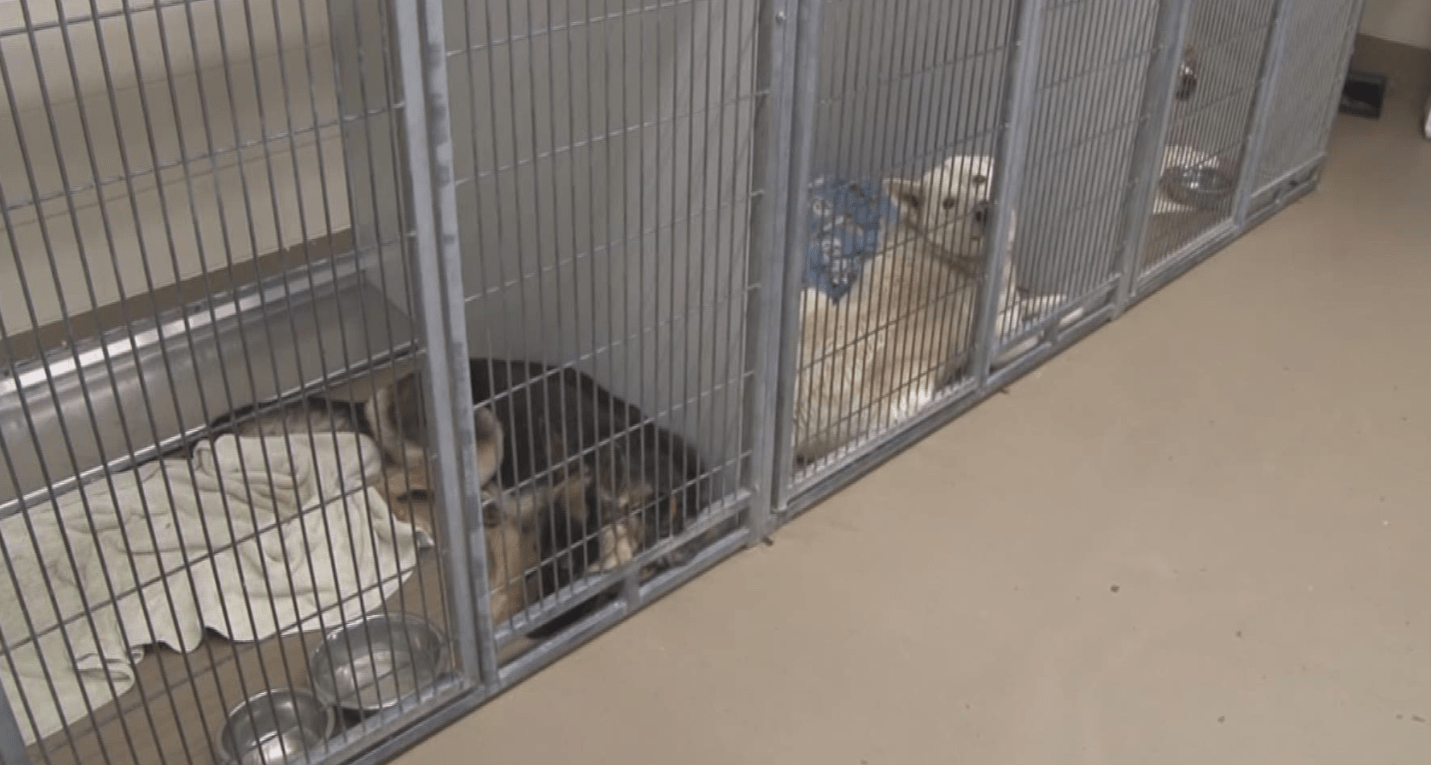Adopting a Rescue Dog: In celebration of Adopt a Shelter Dog Month this October, we connected with our colleagues at the American Society for the Prevention of Cruelty to Animals® (ASPCA®) to delve into the process of adopting a rescue dog. Rena Lafaille, the Director of Administration at the ASPCA Adoption Center, graciously shared her expertise to address some important questions on the topic.
1. Why Choosing a Rescue Dog is Worthwhile
The advantages of adopting a shelter pet are numerous. By choosing to adopt a dog from an animal shelter, you are saving a life and offering a loving home to an animal in need. Additionally, your adoption helps free up resources and space for other animals awaiting their chance. If you’re planning to add a new pet to your family, the ASPCA suggests considering one of the many animals available for adoption at shelters and rescues across the country. For those who prefer to purchase a pet, we recommend working with a responsible breeder rather than a pet store or online retailer.
The internet can be a valuable tool for finding adoptable pets and reputable breeders. However, purchasing a puppy online carries risks, including the possibility that the puppy might come from a puppy mill, have health or behavioral issues, or even be nonexistent. Since it’s simple to set up a website and post attractive photos of puppies, it’s important to be cautious about online claims. If you decide to buy a dog from a breeder, it’s essential to visit the breeder in person. This allows you to see the conditions where the puppies are raised, how they are treated, and the care provided to their parents.
2. How can I locate a local rescue dog for adoption?
You can locate a nearby shelter by using the ASPCA’s national shelter database or by browsing Petfinder. While adoption procedures can differ between shelters, you will generally need to fill out an adoption questionnaire and provide your contact details along with a record of your pet ownership history.
You may be required to pay an adoption fee, which is generally much lower than the cost of buying a dog from a breeder or pet store. Adopting from a shelter often includes benefits such as a veterinary exam, vaccinations, spaying or neutering, and possibly even a microchip, which can reduce the expenses for the new owner. Additionally, any adoption fee collected helps support the shelter’s or rescue’s mission to save, care for, and rehome animals in need.
3. How to Choose the Best Dog for Your Home?
When selecting a dog to adopt, it’s important to take into account your own lifestyle and personality. Consider how much time you spend at home and how much time you can dedicate to training. Shelters and rescue organizations strive to match dogs with prospective owners based on their lifestyle and the dog’s characteristics, ensuring a good fit for both parties.
At the ASPCA Adoption Center, qualified shelter staff evaluate pets and match them with potential adopters to ensure compatibility.
If you’re thinking about adopting a puppy, it’s essential to reflect on your lifestyle. Puppies require significant time, effort, and patience to raise properly, while many adult dogs have more defined personalities and energy levels that are easier to manage. However, remember that every dog is unique, even within the same breed or species. Shelter staff are skilled at matching dogs with potential owners to ensure a good fit.
4. Are there any special care requirements for rescue dogs?
Animals from shelters make excellent companions and truly deserve a loving home. One significant advantage of adopting from a shelter is that the staff is well-acquainted with the animals and can offer comprehensive details about each pet’s background, medical needs, behavior, and temperament. Many shelter dogs are healthy and loving, having ended up in shelters due to unfortunate situations rather than any issues with their own behavior.
In contrast, many puppies sold in pet stores come from commercial breeding facilities where they endure crowded, unsanitary conditions without proper veterinary care, exercise, toys, or positive human interaction. The poor environment in puppy mills fosters the spread of diseases, particularly among puppies with underdeveloped immune systems. These illnesses can be severe, painful, and costly to treat. Additionally, puppies from such environments may develop fear, anxiety, and other lasting behavioral issues, which might not become apparent until after they are brought home, leading to unpredictable, expensive, and often chronic health problems.
Responsible breeders do not sell their dogs to pet stores. They carefully plan each litter and are committed to the health and well-being of their dogs. Since different breeds are prone to specific inherited disorders and diseases, a reputable breeding program works to reduce these risks and enhance the overall health of the breed.
When you adopt from an animal shelter, you can discuss the animal’s health and behavioral needs directly with shelter staff. Similarly, a reputable breeder should be open and engaging, asking you questions and offering references. They should also be available to provide support and information as your puppy matures.
5. What should you look for to determine if a dog may have behavioral problems?
Protocols can differ between animal shelters, but at the ASPCA Adoption Center, animals surrendered to the facility often come with a history form completed by their previous owners. These forms are invaluable for understanding the dog’s behavior in a home setting and can be crucial in identifying the most suitable environment for that particular dog.
Most shelters conduct behavior assessments to provide potential adopters with insights into any behavioral issues a dog might have. Behavior staff regularly monitor and evaluate each dog’s behavior during their time at the shelter, updating their recommendations on the ideal home environment as new information becomes available. Additionally, many shelter employees and volunteers interact with the animals daily and sometimes even foster them, gaining insights into their behavioral traits that can help potential adopters make informed decisions. It’s important to remember that a dog’s behavior in the shelter may not fully reflect how they will behave in a new home. Many shelters also offer post-adoption support to address any questions or concerns that arise.
6. What should I prepare before bringing my new dog home?
To start, you’ll need to buy essential items including a collar, leash, dog bed, treats, and food and water bowls.
Before introducing a new dog to your home, it’s important to ensure your environment is safe for them. This involves removing hazardous decorations, toxic foods, and harmful plants from their reach. Additionally, keep valuable items such as shoes, clothing, and phone chargers out of the dog’s reach to prevent unwanted chewing.
Using dog crates and gates is a good strategy to confine your new dog while they are learning house training and adjusting to their new environment. Providing suitable chew toys will not only keep them engaged but also help prevent them from chewing on your belongings such as shoes and furniture. This approach can also reduce anxiety when they are left alone.
Additionally, it’s important to be aware of foods that are harmful to dogs. Avoid feeding them chocolate, gum, candy, xylitol, grapes, raisins, macadamia nuts, avocados, onions, garlic, salt, tea leaves, raw yeast dough, spoiled or fatty foods, coffee, and alcohol, as these can be detrimental to their health.
If your dog consumes something toxic, contact your veterinarian immediately or reach out to the ASPCA Animal Poison Control Center (APCC) at 888-426-4435. The APCC is available 24/7, though a $75 consultation fee may be required.
When bringing a dog home, you’ll want to gather some essential starter kit items such as a leash, collar, food and water bowls, a cozy bed, waste disposal bags, and treats. It’s also wise to research the typical annual wellness costs in your area to budget accordingly for veterinary care. Additionally, contacting certified, rewards-based trainers is important for helping your new dog settle in comfortably. These trainers can address any behavioral issues early on when they are easier to manage.
Curious about what to consider when adopting a dog? Start by asking yourself, “Am I ready for a dog?” and “What type of dog is best suited for me?” An online dog breed selector quiz can be a great tool to help you find a dog that matches your lifestyle.
7. What should I anticipate during the initial months with a rescue dog?
The initial months after adopting a dog can feel daunting, but it’s important to focus on building a bond with your new companion. From the dog’s perspective, they may not understand that they’ve been adopted into a loving home; instead, they might simply feel they’ve been removed from a familiar setting.
In the initial weeks and months after adopting, it’s essential to take a gradual approach to bonding with your new dog. Just as you’re getting to know them, they’re also figuring out what to expect from you. Try to minimize stressful situations during this period, such as visits to dog parks, large gatherings, or busy areas. Keeping an open mind and approaching each situation with patience can make the transition smoother, as animals often need time to adjust and get comfortable with your routines. Allow your dog to initiate interactions and hold off on hugging or kissing until you’ve built a stronger relationship. It’s also important to remember that occasional house-training accidents are normal during this adjustment period.
8. How should I introduce my new dog to an existing dog at home? A cat?
It’s essential to keep in mind that not every dog will get along well with other dogs or cats. Shelters usually have valuable information about a dog’s behavior around other animals, which can help you assess if the dog you’re considering will be a good match for your existing pets. Many shelters recommend that potential adopters bring their current dogs in for a meet-and-greet, supervised by professional behavior staff, to ensure compatibility.
To effectively introduce a new dog to your household, start by meeting in a neutral outdoor area and taking a walk together. Walking side by side allows the dogs to become acquainted with each other in a relaxed setting, without the pressure of immediate interaction.
Maintain some distance and walk together for a while, allowing the dogs to sniff each other if they seem comfortable before continuing the walk. Gradually introduce them to the inside environment. During the initial introduction phase, it’s best to remove toys, food, and other high-value items to prevent any conflicts.
When introducing a new dog to a resident cat, keep them separated for the first few days and let them become familiar with each other’s scent through scent swapping. For the initial meetings, use a barrier or baby gate and keep the dog on a leash to manage the introduction. Offer treats and positive reinforcement to both pets for good behavior, and ensure the cat has access to vertical spaces to retreat if needed.


